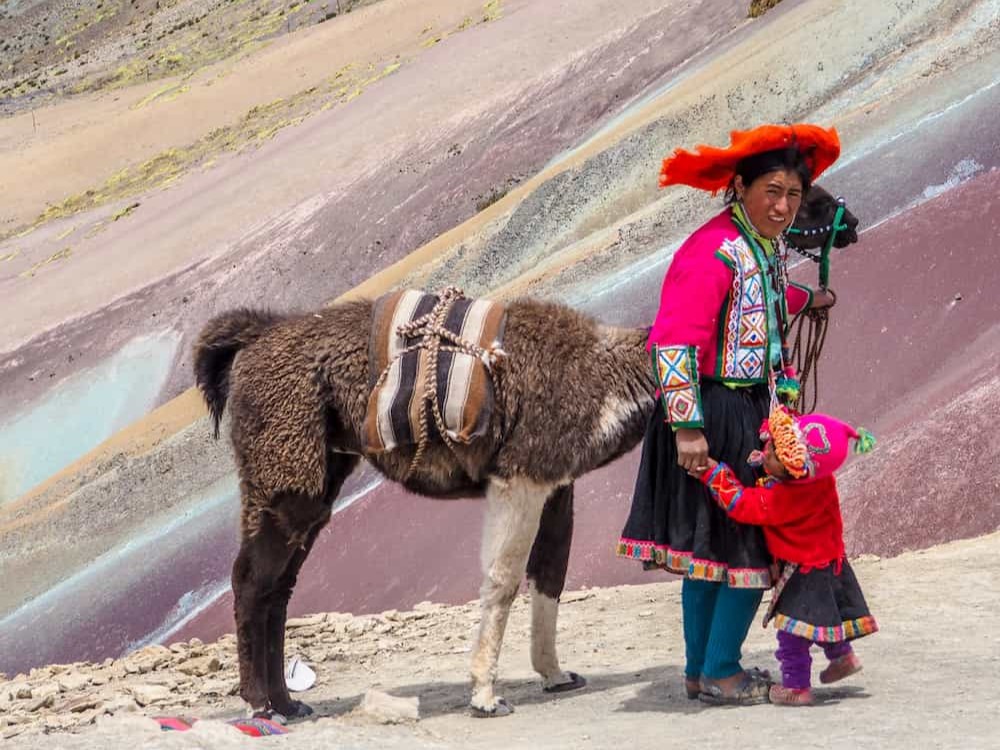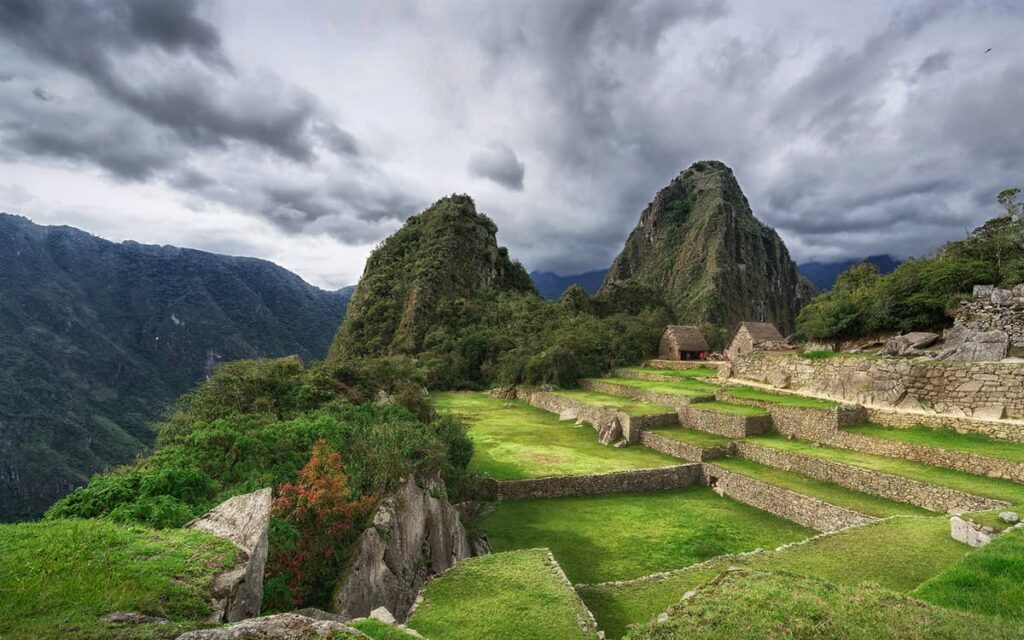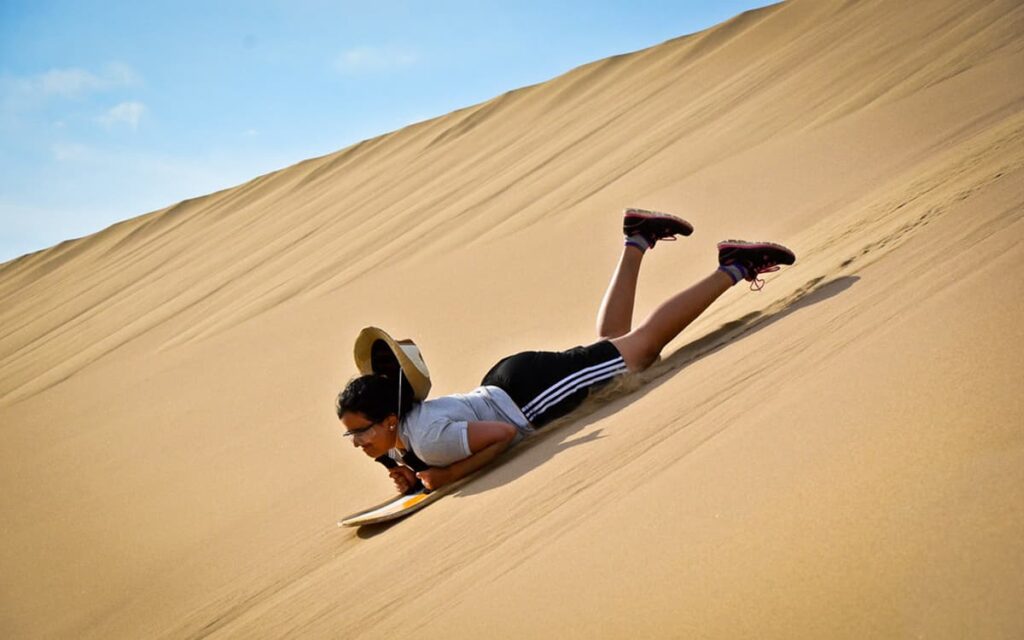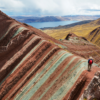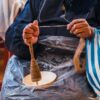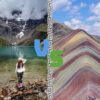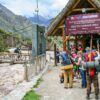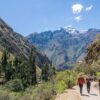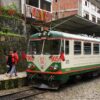The Lord of the Earthquakes, Cristo Negro or Taitacha de los Temblores is an image of the crucified Christ was created in Cusco around 1620, a copy of a work ordered to be built by King Felipe II of Spain, which was destined for the Imperial City but who stayed on the road, in the province of Mollepata.
Its color is not accidental: the Spanish conquerors had the mission of evangelizing the entire population of America, and in order for them to feel more identified with the image of Jesus crucified, they created this dark-colored Christ with indigenous features.
This celebration is of special interest because it allows you to clearly appreciate the fusion of the Andean and Christian religions. The same Cathedral of Cusco, in which the image rests, is built on the basis of the old temple dedicated to the god «Apu Ila Tikse Wiracocha». The image of the Lord of the Earthquakes is carried in a procession through different streets of the city as was done with the ancient mummies of the chiefs, priests and Inka rulers.
Finally, the central element of the celebration falls on the ñucchu flower (salvia splendes), which was used to offer to Wiracocha and with which the Lord of the Earthquakes is currently made.
History of the Lord of the Earthquakes in Cusco
The history of the Lord of the Earthquakes dates back to colonial times; when in 1620 a different Christ was sculpted from those venerated in Spain, in order to strengthen the evangelization process in Peru. This Christ must have copper color and mestizo features.
The image was brought as a gift from the then King Charles across the ocean, in a hermetically sealed ark, the same one that was taken in the middle of the voyage when the storm threatened to wreck the crew. The religious placed the crucifix on the mast of the ship and prayed, miraculously calming down the fury of the sea, which is why the travelers baptized it with the name of «Lord of Storms.»
When the sculpture arrived in Callao, it was entrusted to a Spanish muleteer to take it to the city of Cusco. After going through several incidents, he arrived in Mollepata, Anta province, where the escort rested. When trying to restart the trip, the image of Jesus Christ became so heavy that the people interpreted this fact as a divine plan. «Christ wanted to stay.» Over time a temple was built for him and he was baptized as “Señor Manuel Exaltación de Mollepata” and that is how he is known today in the province of Anta.
The Black Christ occupied an inconspicuous space in the Cathedral Basilica of Cusco and at that time he was known as the Lord of the Good Death.
The story goes that when the great earthquake that shook Cusco on March 31, 1650, a group of faithful took out the Holy Christ in procession to appease divine anger. The earthquake stopped and the image was placed on the door of the Cathedral looking at the city with the belief to appease the constant aftershocks that affected the Imperial City. Due to this earthquake, the Christ of the Good Death was baptized as the Lord of the Earthquakes in Cusco.
But the miracles of the Lord of the Earthquakes continued, in 1720 the city of Cusco Cusco was devastated by a plague that only stopped when the image of the Holy Christ came out in procession. With these miraculous signs, the people decided to proclaim him «Jury Patron of Cusco», displacing the Patron of Santiago who had been nominated as such by the Spanish in 1646.
The procession was instituted on March 31, 1650, in memory of the earthquake, and in 1741 it was changed to the day of Holy Monday, as today Monday, March 26, marking the beginning of Holy Week. The route of the procession continues as it was established in that year.
An important fact is that between January and March 2005, the image of Señor de los Temblores was restored by an interdisciplinary team of the National Institute of Culture (INC), in the laboratories of the Hacienda del Marqués de Valleumbroso, in Tipón of the district de Oropesa, Department of Cusco.
When the master restoration artists were restoring the image, they were surprised to find «Letters» inside the body of the «Lord of Earthquakes» (in the Final Conservation-Restoration Report (INC, 2005, pp.11- 12), which represents the discovery of 61 letters from different years, one of the oldest being found dating from the year 1762. Being an old religious custom, the fact of writing letters to the saint, in order to ask for favors or prayers, begging his mediation, where believers cannot reach with their own effort.
The curious thing about the situation was, where were these letters introduced? And they were precisely made due to a wound located on the side of his chest, which gives us to understand the need of people to approach the saint, this gesture of affective relationship , and of belief that it is still alive in the Cusco population.
The current image of the Lord of the Earthquakes, found in the Cathedral of Cusco with less fine and hard features, was secretly modeled by Cusco artisans.
The Lord of the Earthquakes and Holy Week in Cusco:
Holy Week in Cusco is a mixture of Andean-Catholic tradition, faith and customs. The Archaeological Capital celebrates Easter by worshiping the image of the «Lord of the Earthquakes or Taytacha Earthquakes» in Quechua.
Since that time, the litters of this mestizo Christ go out in procession every Holy Monday, followed by a multitude of parishioners who accompany him with humble fervor.
The most important days during Easter are:
Palm Sunday:
Palm Sunday begins with the popular Rooster Mass at the Cathedral of the Imperial City at 5:00 am. The faithful attend mass carrying palm bouquets and woven crosses from this same plant, these are blessed in the Eucharistic celebrations and taken to the houses to later hang them in the main entrance of each house as a symbol of protection.
Holy Monday:
Holy Monday is the central day of Holy Week in the Imperial City, this day the sworn patron of the city « Lord of the Earthquakes» goes out in procession around the central helmet and then gives the blessing to the faithful from the door main of the Cathedral.
Holy Thursday:
On Holy Thursday in the Cathedral of the City the Archbishop washes the feet of 12 elders this commemorating the washing of the feet of Jesus to his 12 apostles.
You can see the sale of sweets such as corn chips, cakes, sweet empanadas, sighs, etc. in the different squares of the city, this as a preparation for the tasting of the twelve dishes.
At night, families walk the streets and squares of the Historic Center on the route of the «Seven Temples» that recalls the falls of Jesus on his way to Calvary.
Holy Friday:
Good Friday is celebrated with fasting so that at 12:00 noon you can taste the traditional and delicious 12 dishes that include various soups, fish-based seconds and the exquisite desserts based on purple corn, apple, peach, etc. etc.
This day also the youngest of the house make a pilgrimage to the fortress of Sacsayhuaman where it is customary to bring broom branches to rub each other.
Easter Sunday:
With Easter Sunday Holy Week culminates; after a procession and celebration of the Eucharist celebrating the resurrection of Jesus; we can perceive in the city the aroma of the incenses and the different aromatic candles.
The tour of the Lord of the Earthquakes in Cusco
The image of the Lord of the Earthquakes leaves the Cathedral, visits the temple of Santa Teresa, where it changes its shroud and then goes to the temple of La Merced, where the Virgen de la Soledad awaits. Throughout her journey she receives a massive tribute from her devotees and before entering her temple again, she blesses her faithful.
The emotional procession of the also known as «Taytacha de los Temblores» begins and ends in the Cathedral Basilica, the image of the crucified Christ, goes out to Plateros street, ascends to Siete Cuartones, will enter the church of Santa Teresa for a short rest, then resume the displacement and enter the streets Teatro and Granada.
Then it accesses the Plaza San Francisco where the first blessing will be given, the path continues and enters Marqués street, then Espinar square where it rests for the second time in the church of La Merced, later the procession continues through Mantas street and She returns to the Plaza de Armas and before being entered she offers the second blessing to the four cardinal points, to a sea of ??people, some 300,000 people.
During the transfer you can appreciate the Catholic fervor, the crowd sheds tears, thanks him and asks for his well-being, from the balconies ñucchu flower petals are thrown red the color of Our Lord, representatives of public and private institutions pay homage to him with altars on every street.
The crimson flower, the great companion of the Black Christ
We cannot speak of the Black Christ of Cusco without mentioning her great companion: the crimson flower. The ñucchu is a native flower of this region of our country that grows in the heights during the rainy season (from November to April) and has an intense crimson red color.
Some of the most devout cusqueños travel to Sacsayhuamán or Poroy before the procession and here they collect a large quantity of ñucchu to take it to Cusco, where it will be used in the departure of the Christ.
During the Holy Monday procession, the crown of the Black Christ is adorned with this flower and the faithful who accompany the Lord of the Earthquakes throw handfuls of ñucchu in his wake.
According to religious people in the area, the crimson flower was chosen as the companion of the black Christ because in its center it is shaped like a cross, which represents the passion of Jesus Christ. In addition, the color red is related to the blood shed by the Lord as love for his faithful.
Seeing the Black Christ walking through the streets of Cusco, accompanied by his devotees and by a rain of crimson flowers, leaves precious images year after year. So, whether you are a believer or not, if you are lucky enough to be traveling in the Imperial City during these dates, do not hesitate and be part of this procession, which reflects to the maximum the mixture of Christian and Andean traditions of society. Cusco.
Enjoy the Holy Week party in Cusco. Touring Cusco is discovering endless mysterious places, with hidden stories in corners that you may have never seen before stepping on this country. We recommend you to visit another impressive destinations in Cusco like the tour to rainbow mountain peru or the humantay lake tour from cusco, which only takes one day. But if you are gonna to stay more days in Perú, other archaeological places you can know will be the choquequirao trek peru, the salkantay trek to machu picchu, and the classic inca trail 4 days 3 nights.

